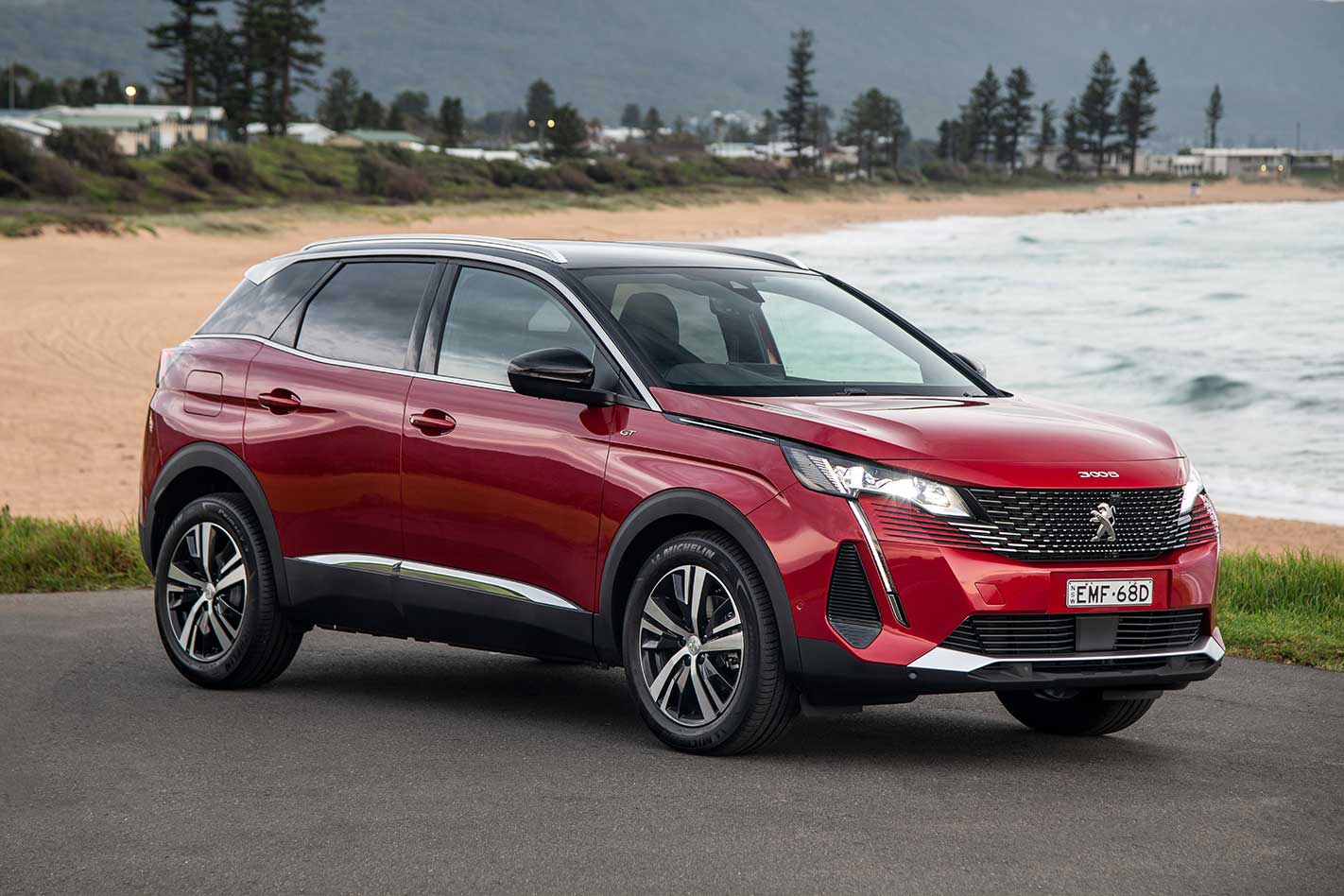
“Design is the main reason to buy a Peugeot,” which is a frank admission from the horse’s mouth.
Perhaps elsewhere, in Europe, say, where its maker claims the Peugeot 3008 mid-sized SUV sits at number three on the top-seller list for a line that sells a million examples globally. A good many, no doubt, with French rego plates.
But here in Australia, Peugeot remains a challenger brand, despite a steeped providence in Oz and despite having being around as a brand for a remarkable 210 years.
Aussies don’t mind a bit of design, or in a motoring-culture respect some French funkiness and quirkiness, but a major priority in mass-popular SUV-dom? That’s a big ask.

The new 508 sedan kicked it off, firming up three SUVs in quick succession comprised of all-new 2008, revised 5008 and this newly face-lifted and crucially important 3008 mid-sized family hauler.
Front and centre in the newly facelifted range is the new GT petrol, not because it’s as sport-tinged fancy as the new flagship GT Sport, or as forward-thinking electrified as the forthcoming PHEV version later this year, or tomorrow’s EV due in 2022.
It’s because, at $47,990 before on roads, the mid-ranger straddles the line of offering flamboyant, style-driven Frenchness for a palatable upper-mainstream price with the brand’s own aspirations to be considered part of the properly premium Euro set.

This second generation lobbed in the latter half of 2017 with measurably more attractiveness than its buzz-killing MPV-based forebear.
Less cut and dry is that the face-lifted GT is essentially the old GT-Line – a nameplate Peugeot has ditched globally – with some spec fiddling, not a substitute for the old GT Blue diesel flagship, which is still offered if sat under the current, newly named petrol tree-topper, the GT Sport petrol. Confusing much…?
At $47,990 list, the GT petrol variant sits above the buck-banging entry Allure ($43,990 list) it shares its 1.6-litre, six-speed-auto, front-driven motivation with and below the $3000 pricier GT Blue diesel ($50,990 list). The flagship GT Sport, ($54,990 list), boasts a higher-output 1.6 turbo paired with an eight-speed auto.
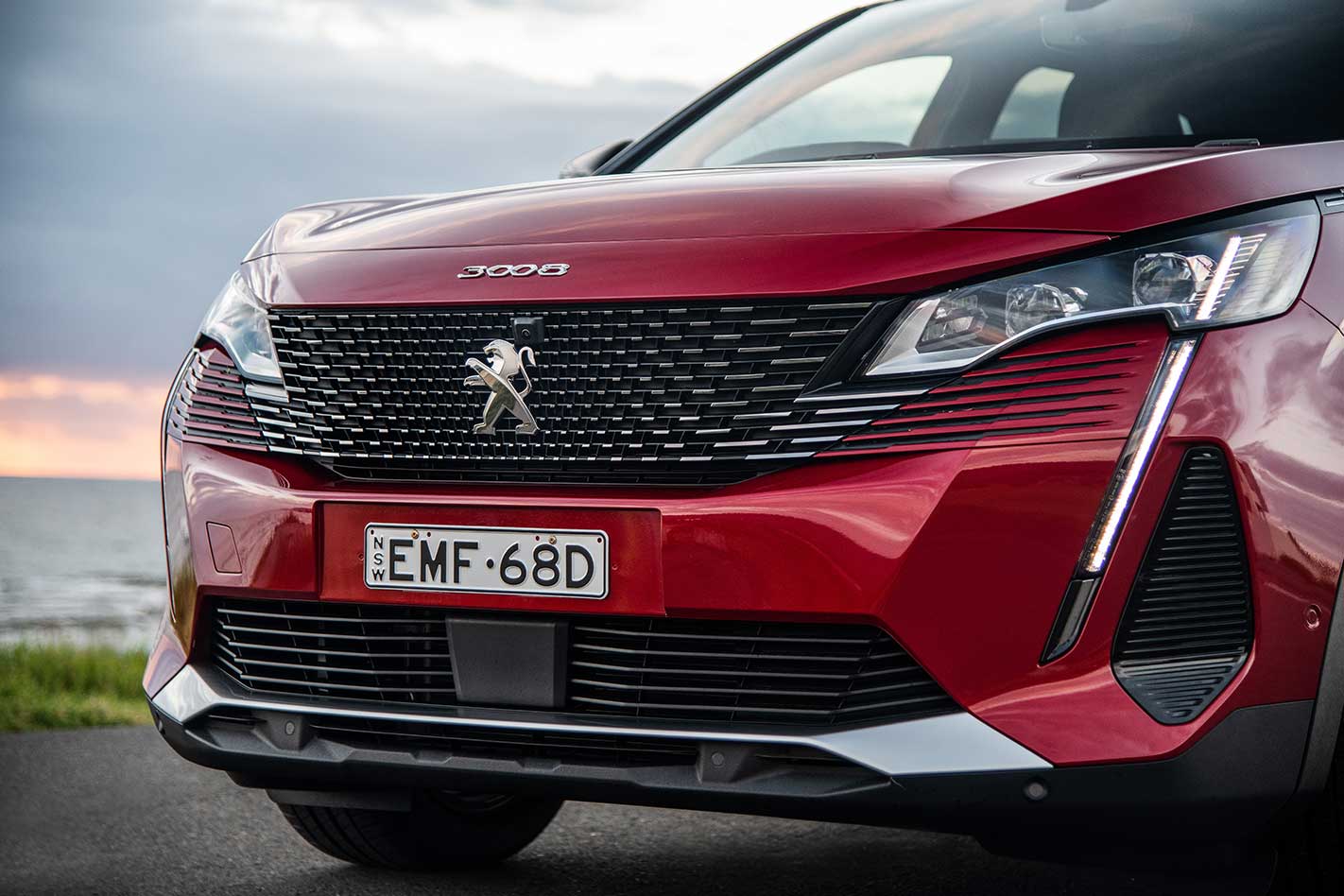
Roughly 3008 GT petrol money also buys a broad range of options in Toyota RAV4 and Mazda CX-5, a selection of high-spec all-paw Hyundai Tucsons, Honda CR-Vs, Kia Sportages and Nissan X-Trails, and also lobs you roughly mid way between the Volkswagen Tiguan Comfortline and Highline versions.
The struggle, then, for the small-capacity front-driven Peugeot 3008 GT is to lure you away from larger-capacity and hybrid alternatives offering, in many cases, all-wheel drive.
A healthy equipment list is a nice dangling carrot. Outside, the GT fits self-leveling auto LED headlights and taillights, dynamic indicators, high-beam assist, 18-inch alloy wheels, rain-sensing wipers, front and rear parking sensors, electric power-folding mirrors, privacy glass, aluminium roof rails and a powered tailgate with foot gesture control. The stainless steel scuff plates are a nice premium touch.
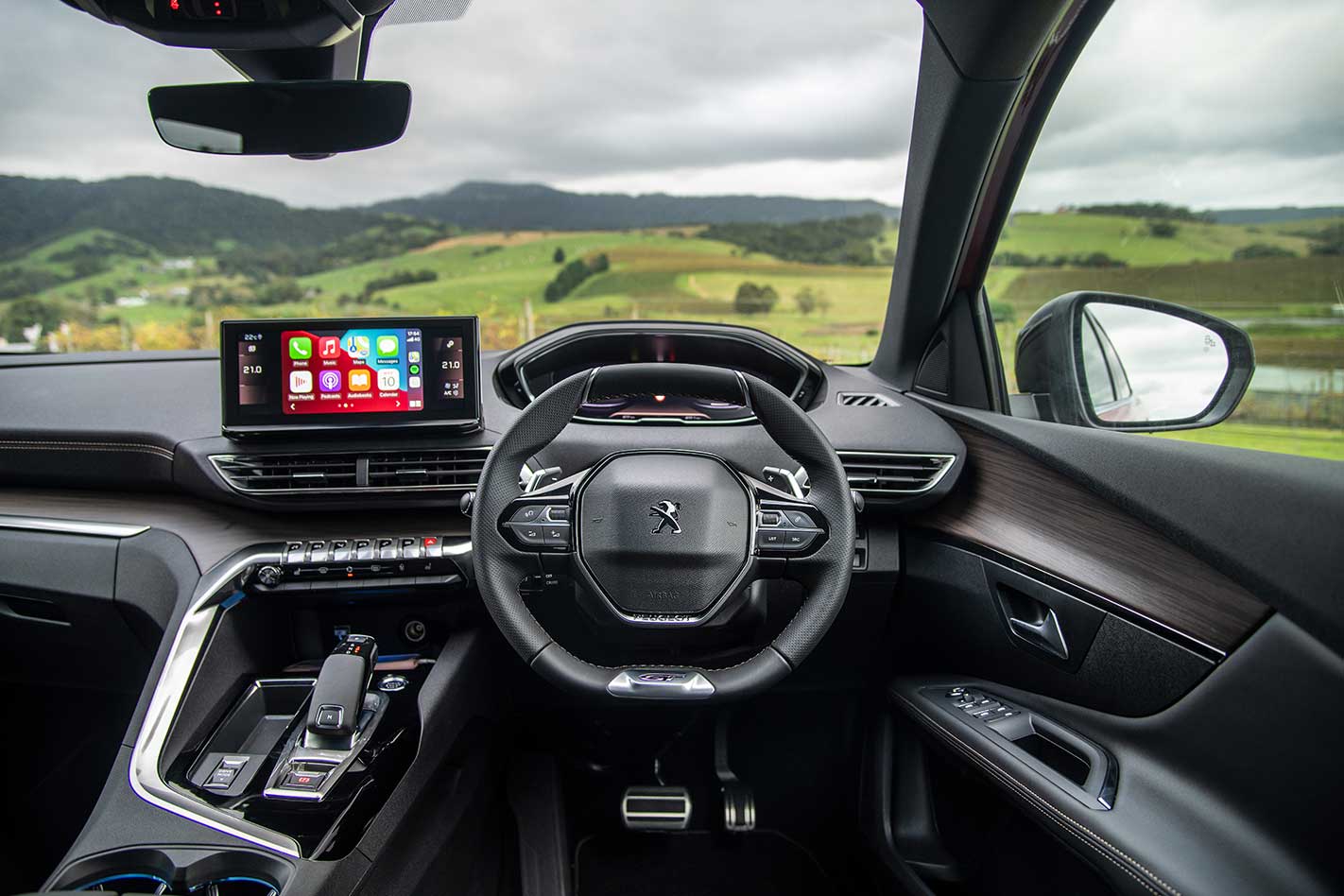
Seats are manually adjustable with Alcantara and leatherette, though our test car was fitted with sumptuous grey-stitched full-grain Nappa leather jobbies with front heating and driver massage function, adding $3590 to the bottom line. Premium paint also adds a frosty $1050.
Key to the MY21 facelift is the upgrade from the old 8.0-inch infotainment system to a new 10.0-inch screen, bringing DAB+, proprietary sat-nav, Apple CarPlay and Android Auto mirroring and 360-degree camera viewing. An inductive phone-charging tray is fitted and both adaptive cruise control and auto steering assist while parking are standard.
Other facelift upgrades include the new grille, nine-slat LED taillights, a newer third-generation all-speed autonomous emergency braking system with night time pedestrian and cyclist detection and two new three-layer-effect colours of the available seven hues.
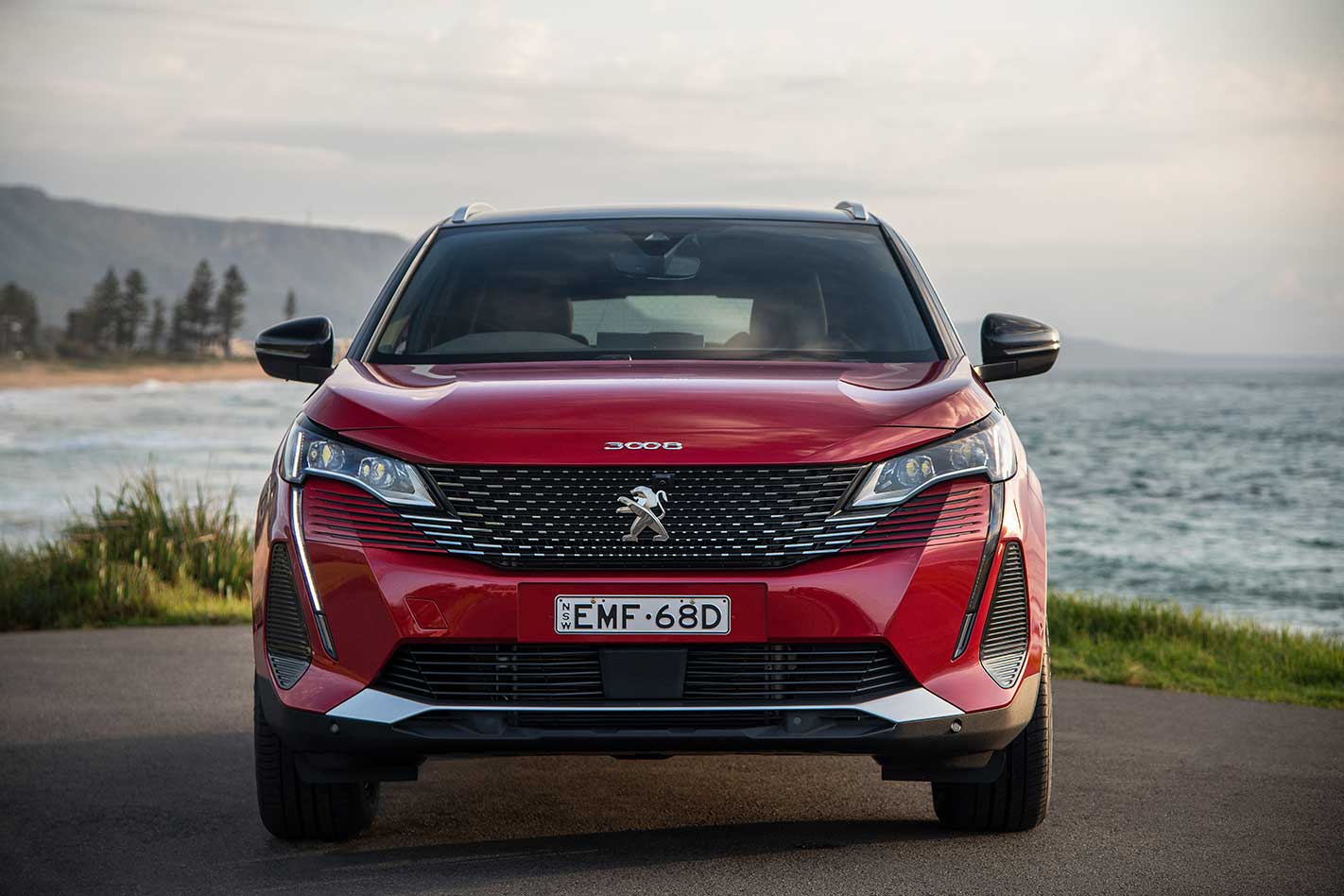
Where some Peugeots’ i-cockpits are abject failures – the wheel rim completely obscures the instrumentation – the 3008 just gets away with it, not requiring the wheel to be set to an uncomfortable height while maintaining some (if not all) instrument visibility.
And it take roughly three seconds at the helm to decide whether or not you’ll gel with its oddball design and its tiny weirdo multifunctional wheel.
The large 12.3-inch high-definition digital format offers a selection of configurable and stylized skins, redesigned with ‘more black’ for MY21, that aren’t as fancy as the 3D effect display in the 2008 but offer much more quick-glance legibility.

The front seats are excellent, the supple Nappa leather and fetching quilt stitching impressively upmarket, the shapely contour blending pliant cushioning and firm support.
Less convincing is the hook-shaped, asymmetric central stack and console design that excludes the front passenger from easy access to fairly basic cabin features and control – works a treat in a sportscar, not nearly as convincingly in a family hauler.
Most of the cabin controls, including climate control setting adjustment, are accessed via the 10.0-inch touchscreen, making for a streamlined cabin look if fiddly usability, including the trendy metal shortcut ‘flaps’.
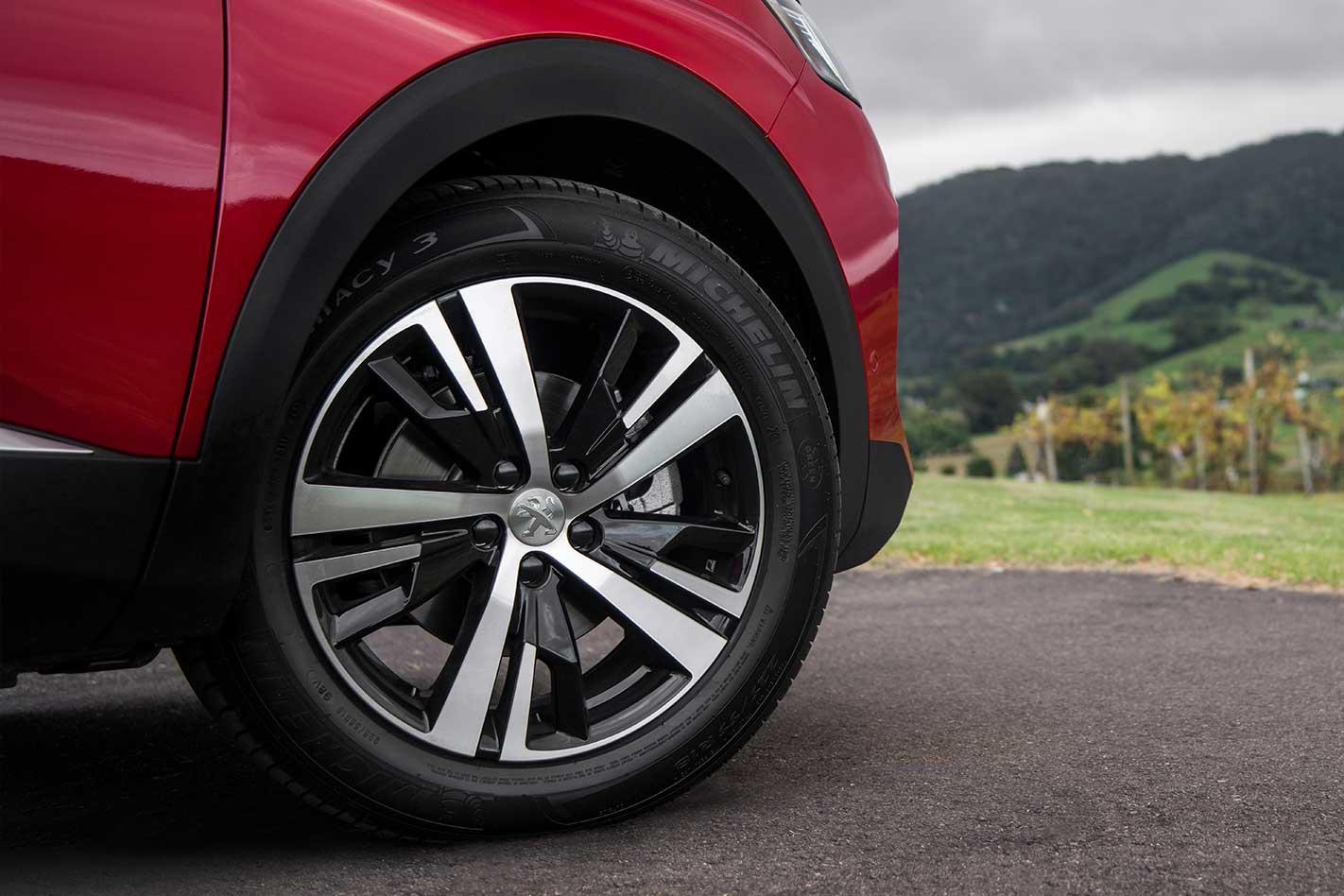
Second row roominess isn’t the 3008’s strong point, though head, knee and shoulder room are all acce-table enough to provide decent long-haul adult comfort if treated as a four-seater. There are certainly more cleverly packaged mid-sized SUV choices out there.
Its 591 litres of boot space converts to 1670 with the rear seatbacks stowed into a usably flat and squarely-proportioned load area and the floor can handily slot into one of two different heights to taste.
The ‘Puretech 165’ 1.6-turbocharged petrol four produces a reasonably healthy 121kW at 6000rpm and 240Nm from 1400rpm, with decent response and a workmanlike delivery and enough on-tap squirt for merging, overtaking and exiting side streets into fast-moving traffic.
Typical of small boosted fours, it gives in the mid-range and the lack of top-end shove does, at times, demand patience.

But no amount of French flair can putty over is that the ‘Puretech 180’ 1.6 in the flagship GT Sport, as a key point of difference, makes an nominally extra 12kW and 10Nm, yet marches to triple figures a significant 1.1 seconds quicker and, at a stunning 5.6L/100kms for its combined claim, appears much more frugal.
The psychological hump for Aussie buyers is that, at a little under $53k with leather and nice paint options as tested, the GT Petrol still fits the lowest-spec powertrain on the 3008 menu.
Ignore the form guide and there’s depth and quality in the real-world experience. Its ample motivation is backed by a smooth running nature and relatively quiet dignity, the powertrain neatly sidestepping the typical unruffled nature and annoyances of alternative CVT and dual-clutch systems.
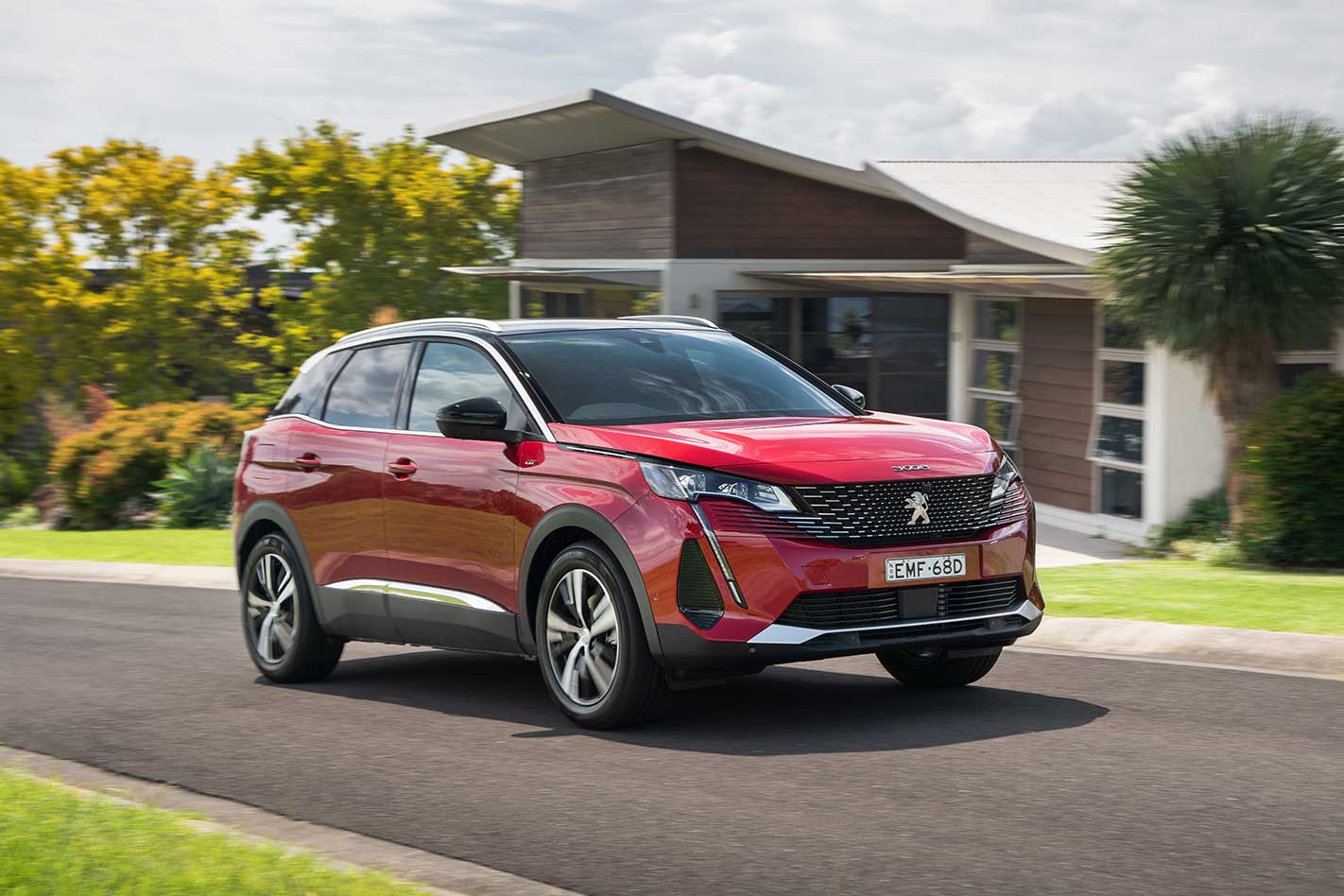
Steering is light, direct and faithful and the turning circle, at 10.7 metres, is concise, while outward visibility is good, particularly forward, and there’s decent enough clarity from the guided reversing camera to make it easy to park in tight spaces.
It fits one of those weird so-called ‘360’ camera views taking the feed off the rear only, a redundant feature from vehicle start-up as it blacks out much of the overviewed landscape.
But where the 3008 GT really hits its premium stride is in ride quality, which is nicely judged and impressively compliant across bumps with very little discomfort transmitted through the cabin.

It has a substantial feel to it, though thanks to a relatively lithe 1451kg kerb weight there’s more a crossover-like eagerness to its dynamic cooperation – that it avoids that typically lumbering SUV-ness ought to win over tyre-kickers willing to give the French machine a spin.
That said, the column-mounted paddleshifters are largely superfluous window dressing and, thankfully, Peugeot has located them with enough clearance as to not constantly and annoyingly brush your knuckles.
All MY21 3008 variants come with a five-star ANCAP rating awarded in Q3 2017 around the time this second generation arrived in Oz off assessment tested conducted in 2016 by Euro NCAP. That’s despite a poor showing for AEB that the 3008’s current crop amends.

Peugeot offers five years of unlimited-kilometre warranty on its passenger vehicles for private use. Servicing is every 12 months with nice long 20,000kms intervals if you tend to clock up the annual mileage, though interval costs are on the pricey side: lows of $397 and highs of $788, a total of $2768 over the first five visits averaging out to $553.60 per year.
Sure, the 3008 GT isn’t cheap to buy or to run, but it does deliver well in equipment and, importantly, it convincingly embodies authentic premiumness in how it feels and drives. That’s less of a bonus for its compelling and alternative French design pitch and more genuine reason for serious consideration.
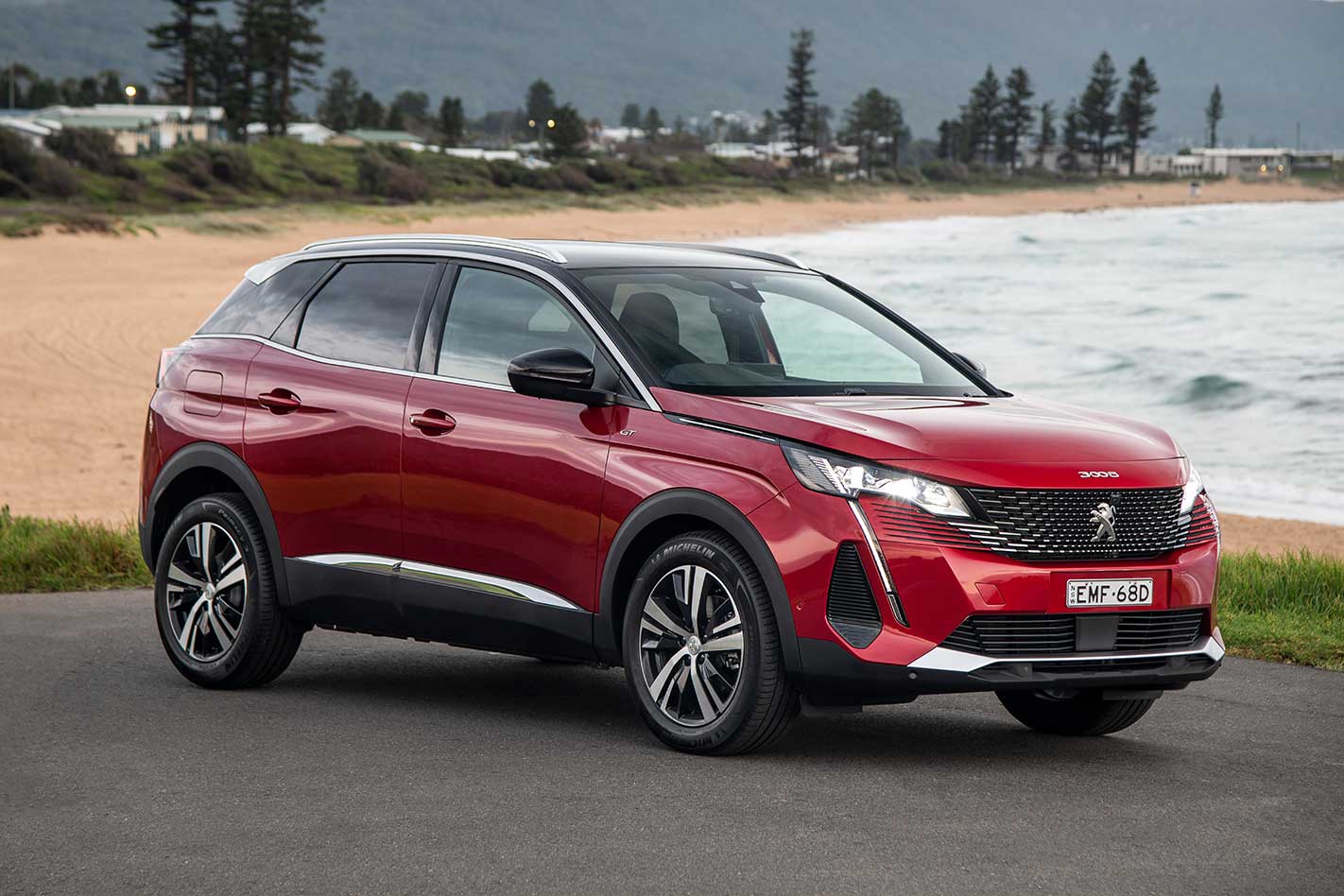
Verdict: 7.5/10
Likes: presentation inside and out, lots of nice gear (if optioned), upmarket crossover-like on road character
Dislikes: minor mid-life changes, pricey (particularly optioned), misses the nicer flagship 1.6T powertrain, i-Cockpit design not for all tastes
Specifications
Body: 5-door, 5-seat SUV Drive: front-wheel Engine: 1598cc inline-4cyl, DOHC, 16v, turbocharged Bore/stroke: 77.0 x 85.8mm Compression: N/A Power: 121kW @ 6000rpm Torque: 240Nm @ 1400rpm 0-100km/h: 9.9sec (claimed) Fuel consumption: 7.0L/100km (combined/claimed) Weight: 1451kg Power/weight: 84kW/tonne Transmission: 6-speed automatic Suspension: struts, coil springs, anti-roll bar (f); torsion beam, coil springs, anti-roll bar (r) L/W/H: 4447/1906/1624mm Wheelbase: 2675mm Tracks: 1579/1587mm (f/r) Steering: electrically assisted rack-and-pinion Brakes: N/A (f); N/A (r) Wheels: 18 x 7.0-inch (f/r) Tyres: 225/55 R18 (f/r) Price: $47,990




